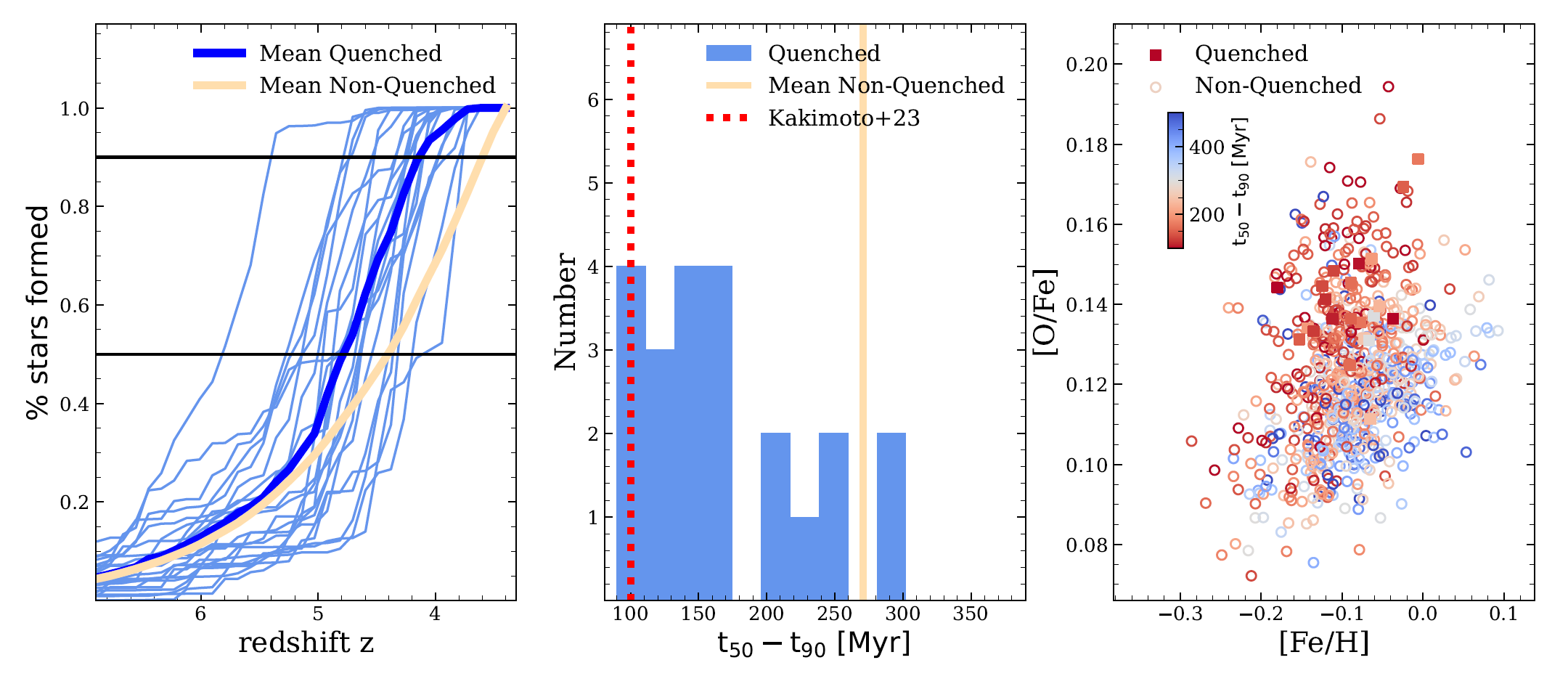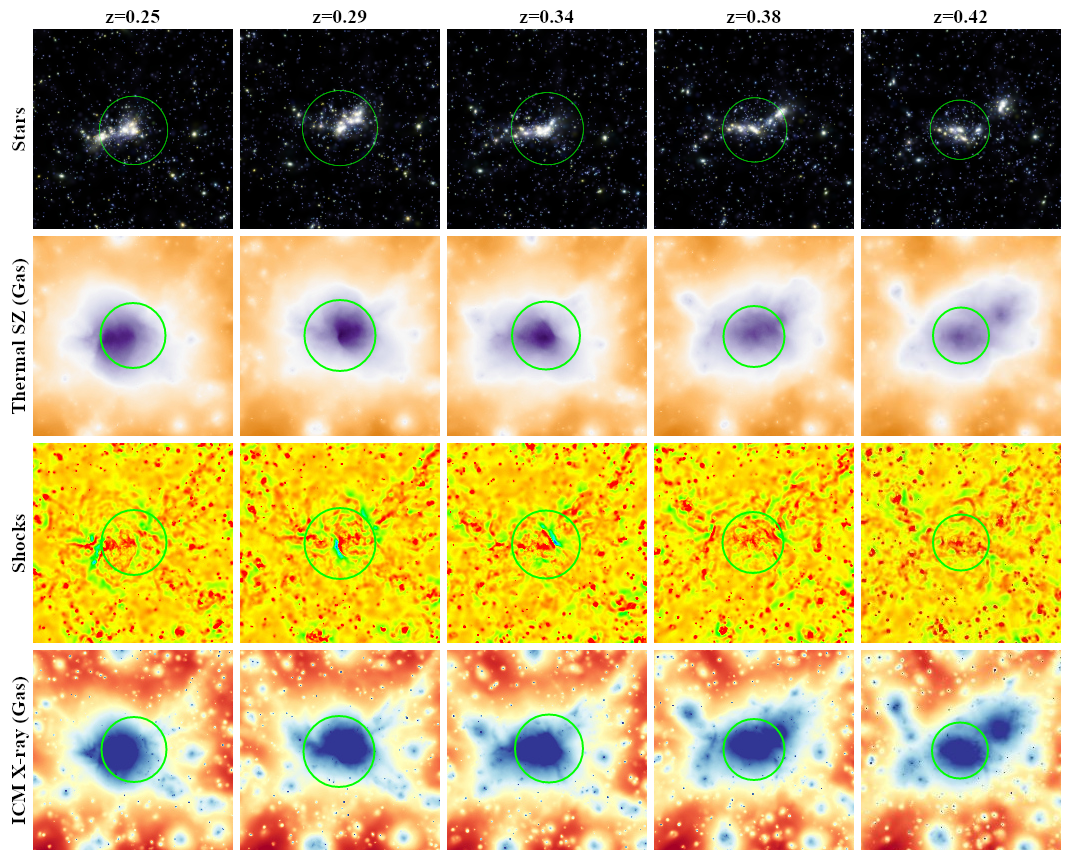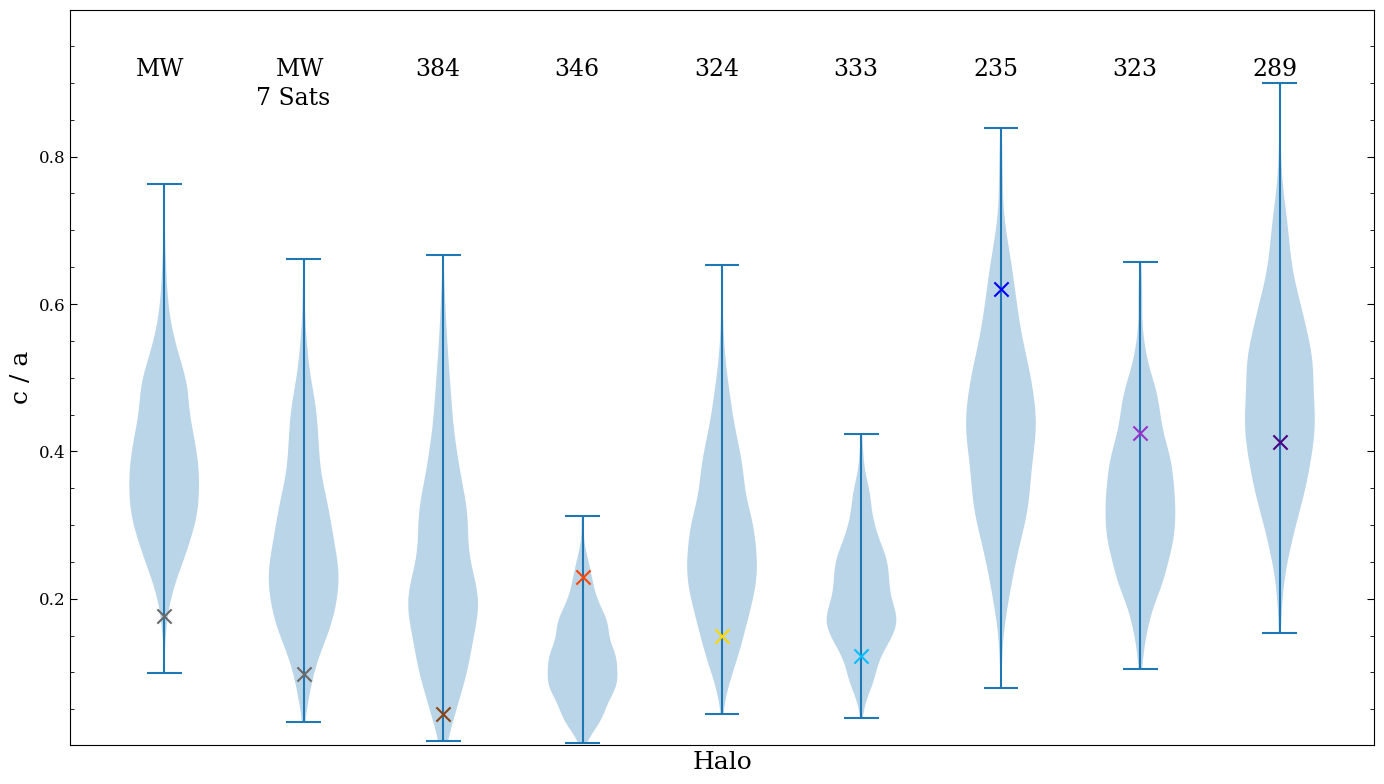My Research

Quenched Galaxies at Cosmic Dawn
Observations with JWST have recently revealed a substantial number of galaxies at redshifts higher than z=3 that are already quenched of star formation while their stellar masses are larger than 10^10M_sun. Such galaxies are a challenge to our understanding of structure formation, as the well established quenching mechanisms for massive galaxies at low redshift require longer timescales than the age the Universe has at this point in time. Using the high-resolution large volume of the Magneticum simulations I show that a large simulation volume with high resolution is required to reproduce such massive quenched galaxies at high redshifts in similar volume densities as observed. Furthermore, I show that these galaxies undergo a massive starburst, forming nearly half of their stars within 100-200Myr, before they are very quickly quenched by their combined stellar and AGN feedback. However, interestingly these quenched galaxies all reside in rather underdense environments, contrary to typical quenched galaxies at low redshifts. I demonstrate that this is necessary for the quenching at high redshifts to be efficient: at such high redshifts, in dense environments the cold gas can still funnel back from the cosmic web to the galaxy after an AGN outburst as the hot halos have not yet been fully established, so galaxies in dense environments rekindle their starformation quickly. Only in underdense environments the inflow of gas is suppressed sufficiently enough for a longer lasting quiescence. Finally, I show that the rapid star formation of these quenched galaxies causes a strong alpha enhancement in the metallicity content of the stars, as the 200Myr timeframe is too short for significant enrichments of the gas from SN-Ia.
For more details, see Kimmig et al., 2023
In a companion study, we furthermore analyzed the future development of the quenched galaxies in our simulations. We showed that about 20% of the galaxies are accreted onto a more massive structure by z=2, while from the remaining 80% 1/3 stays quenched, 1/3 rejuvenates, and the others rekindle to a low rate in star formation. Those galaxies that rejuvenate can actually return to the star forming main sequence, however, they form most of their stars at radii between 1-3 halfmass radii. Overall, we find that the quenched galaxies at cosmic dawn tend to not end in the most massive clusters at z=0, but rather stay in less dense environments, most of them ending in group mass or smaller halos.
For more details, see Remus & Kimmig, 2023

Galaxy Cluster Abell 2744
The galaxy cluster Abell 2744, one of the clusters observed with the Hubble Frontier Fields Program, is one of the most massive clusters in the Universe. Its dynamical state is classified as very active, and from lensing observations it is known that it contains at least eight extremely massive substructures. This configuration as such has been debated to contradict LCDM for several years now, as it has proven difficult for simulations to reproduce this particular cluster successfully.
Using one of the largest fully hydrodynamical cosmological simulation volumes from the Magneticum Pathfinder simulation suite, I identified a simulated counterpart of Abell 2744, with not only the substructure masses matching observations but also other properties like shock fronts detected in the X-ray emissions, and show that Abell 2744 is indeed a product of not only one recent major merging event, but rather at least six mergers of structures with mass ratios between 1:2 and 1:20. Furthermore, I showed that the problems in identifying such clusters in LCDM simulations does not actually steem from the lack of these structures with multiple massive substructures, but rather are caused by the very different methods imployed to find substructures in simulations and observations, and projections effects.
For more details on this study, see Kimmig et al., 2023.

Satellite Planes around Milky Way Analogues
The Milky Way possesses the best measured plane of satellite galaxies. Using the hydrodynamical cosmological simulation Magneticum Pathfinder, I identified Milky Way analogue that eshibit similar planes of satellites based on the similarity of the planes radial extend and the ratio of the axes of their shape tensors, c/a. About a quarter of all Milky Way mass halos in the simulation actually exhibit satellite planes of similar flatness with c/a<0.2. However, tracing these disks back in time reveals that most of them are actually only transient in nature, and only in very rare cases it is possible to fine a stable plane persisting over time. In such case, we find indications that these planes are formed through interations of the satellites after infall, and are not a product of a group-infall or specifically anisotropic infall of the satellites.
Generally, the Milky Way satellites are found to be better aligned than would be expected from an isotropical set of satellites at the same radial distribution, as can be seen on the left, with the latter on average having a c/a=0.4. For our best Milky Way analogues, we find a similar behaviour, clearly showing that this plane feature is, in fact, a special confiuration.